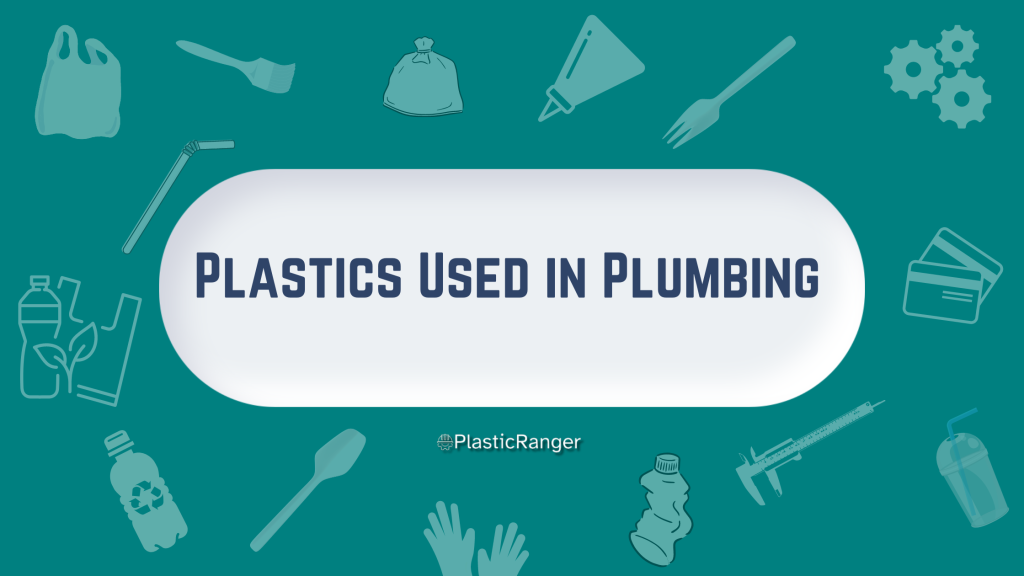Plastics Used in Plumbing
A Comprehensive Guide to Plastics Used in Plumbing The world of plumbing has witnessed a transformative shift over the past few decades, with plastics steadily replacing more traditional materials like copper, lead, and cast iron.
The benefits of using plastics are manifold, including their lightweight nature, resistance to corrosion, and cost-effectiveness. As we delve into the intricacies of the types of plastics commonly used in plumbing, their distinct characteristics and optimal applications will be highlighted.
Here’s an all-encompassing guide that will walk you through the various plastic materials utilized in the plumbing sector:
Plastics In Plumbing – Introduction
In the past, the plumbing industry relied heavily on metals and ceramics to create reliable and sturdy water, sewage, and drainage systems. However, the advent of plastics has revolutionized this domain, offering a more cost-effective and efficient alternative.
Plastics are resilient against corrosion and easy to install due to their lightweight properties and long lifespan, making them a preferred choice in contemporary plumbing solutions.
Common Types of Plastics Used in Plumbing
PVC
Properties: PVC is known for its rigidity and high tensile strength. It is resistant to corrosion and chemicals, making it a durable choice for plumbing applications.
Applications: Widely used in sewer pipes and drainage systems, it’s also utilized in making pipe fittings, valves, and conduits.
CPVC
Properties: A variation of PVC, CPVC can withstand higher temperatures, making it suitable for hot water lines. It shares PVC’s resistance to corrosion and chemicals.
Applications: Commonly used in hot and cold water supply lines.
HDPE
Properties: HDPE is flexible and highly resistant to wear and tear. It is lightweight and can withstand moderate temperatures.
Applications are often found in water supply lines and sprinkler systems and are sometimes used in sewage systems.
PEX
Properties: PEX is exceptionally flexible, resistant to low and high temperatures, and highly resistant to chemicals.
Applications: Predominantly used in water supply lines due to its flexibility and ease of installation.
ABS
Properties: ABS is a strong yet slightly flexible plastic resistant to physical impacts and corrosive chemicals.
Applications: Used extensively in waste, vent, and drainage pipe systems.
Polypropylene (PP)
Properties: PP is known for its toughness and resistance to chemicals. It can operate effectively at high temperatures.
Applications: Frequently used in high-temperature fluid transportation and creating joints and fittings.
Choosing the Right Plastic for Plumbing
When selecting the right plastic for various plumbing applications, several factors must be considered. These include:
Temperature Resistance: The choice of plastic material would vary depending on whether the pipes carry hot or cold water.
Corrosion Resistance: In areas with high chemical exposure, plastics resistant to chemicals should be preferred.
Ease of Installation: Some plastics are more flexible and easier to install than others, potentially saving time and labor costs.
Budget Constraints: While plastics are generally cost-effective, different plastics come with varying price tags. Choose according to the project budget.
Installation and Maintenance
Using plastics in plumbing necessitates understanding the specifics of installation and maintenance:
Joining Techniques: Different plastics have varied joining techniques, such as solvent welding, heat fusion, or mechanical joints.
Expansion and Contraction: Being aware of the expansion and contraction properties of plastics can aid in preventing future issues.
Repair and Maintenance: Regular maintenance to check for wear and tear, leaks, or damages is essential to ensure a long-lasting plumbing system.
Environmental Considerations
Given the increasing focus on sustainable practices, it is essential to consider the environmental impact of using plastics.
Recyclability: Certain plastics are more recyclable than others. Opt for environmentally friendly options where possible.
Longevity: The longer lifespan of plastics compared to traditional materials can be seen as an environmental advantage, reducing the frequency of replacements and conserving resources.
Regulatory Compliance and Standards
Plastic plumbing materials must adhere to specific industry standards and regulations to ensure safety and quality:
Compliance with Local Codes: Ensure the chosen plastic materials comply with the local building and plumbing codes.
Certification: Look for materials certified by relevant industry organizations for quality assurance.
Summary
In the dynamic realm of plumbing, plastics have ushered in an era of efficiency and sustainability, offering cost-effective and durable solutions with easy installation and corrosion resistance.
Understanding the distinctive properties and applications of each plastic type is crucial. Selecting the appropriate plastic material, aligned with project specifics, ensures the reliability and longevity of plumbing systems. Emphasizing recyclable plastics promotes a sustainable future.
As innovations persist in plumbing, plastics emerge as dependable materials facilitating further sector advancements. Compliance with industry norms and regulations guarantees the best use of plastics in plumbing, leading to resilient and proficient systems.
This guide seeks to assist in the insightful selection of plastics for successful plumbing ventures.
Quick Navigation

